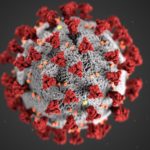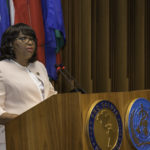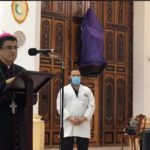In 1969, the Sandinistas presented a vision for Nicaragua to the people. This vision was captured in the “Historic Program of the FSLN”. It promised, among other things, a “Revolutionary government” that would guarantee “that all citizens can fully exercise their individual freedoms and that it would respect human rights”, while also stating quite categorically that the Sandinistas would “Severely punish the gansgters who are guilty of persecuting, informing on, abusing, torturing, or murdering revolutionaries and the people.” Forty-nine years later, the FSLN no longer exists as a revolutionary organization. It is, instead, a cult of personality forged around the figure of Daniel Ortega.
It really is a disservice to many Sandinistas to call the structure that Daniel Ortega and his wive, Rosario Murillo, have created “Sandinismo”. It is not. It is “Orteguismo”, and Orteguismo has successfully re-instituted a dictatorship in Nicaragua, by exploiting characteristics of the Nicaraguan political culture that never really went away, not even after Somoza was deposed.
Indeed, for all the talk about creating the “new man” that was so prevalent during the years of the Sandinista Revolution, Orteguismo is now a cult of personality that perpetuates the same tendency to kowtow to a strongman that kept Somoza in power for four decades. Orteguismo depends on the uniform acceptance of dictates that emanate from the top. The latest one is the “Policy to Promote a Culture of Peace and Reconciliation” (henceforth, the Policy).
On Nov. 1, Vice President Rosario Murillo took to the airwaves for her customary message to the people of Nicaragua. Among other things, she stated that the Ortega regime was wrapping up consultations on the Policy. The consultation process, which began in late October, had yielded a 26-page draft, which is now public and it has been the subject of scrutiny and debate. The ultimate goal is for this draft to be presented to the National Assembly, to be the basis of a new Reconciliation Law, which some critics fear that will lead to a blanket amnesty of paramilitaries, police officers, and government functionaries that either participated directly, ordered, or turned a blind eye to acts of repression and human rights violations against the Nicaraguan people.
This post presents a summary and analysis of the main points of the Policy. A complete copy of the draft, in Spanish, can be found at the bottom.
What we know about the consultation process.
Rosario Murillo described the consultation process that led to the Policy in her daily address on October 19:
“I have in my hands the Policy for a Culture of Peace and Reconciliation that we have been working on, and it is ready, and we’re going to start consultations with different Sectors of our People that are already participating in all the Activities that promote Reconciliation and Coming Together. The Peace Commissions are functioning throughout the Country, in Neighborhoods and Communities, promoting Christian Love, Christian Fraternity. Promoting the Biblical Precent that says “Love one another. Respect one another. Love each other, in advancement, in progress, in prosperity” (Consejo de Comunicacion y Ciudadania, 2018, para. 48)
How these “consultations” were handled is only known to anyone that was invited, and those were only “people already participating” in regime-sanctioned activities. Indeed, the policy was presented only to Orteguista sympathizers, rather than to the population at large. As for the Peace Commissions, these are local committees that were proposed in June to the National Dialogue. At the time, an official statement by the Ortega delegation described the Commissions as local committees that would become a way to establish “mechanisms and valid compromises, immediately applicable, to stop the terrorist wave of crimes, abductions, humiliations, threats, intimidation, arson, and limitless atrocities that threaten the life and dignity of people and families throughout Nicaragua.”
Unsurprisingly, this proposal did not enthuse any one who wasn’t already a committed Orteguista, as it did not acknowledge any government responsibility for the crisis. The regime insisted that it was caused by terrorism. This argument has not changed.
Even though the consultation process is not inclusive and open as Murillo claims, the regime sees it as an opportunity to disseminate positive PR messages. Orteguista sympathizers and state entities, like the Ministry of Education, have been posting images from the consultations meetings, like the ones below. The first one shows “militants in the Aquiles Medina neighborhood in Los Braziles […] analyzing the policy to promote a culture of peace and reconciliation.” Militants, in this context, refers Orteguistas who are current members of the FSLN.
#NicaraguaQuierePaz Asamblea de militantes en el Barrio Aquiles Medina en los Brasiles de nuestro municipio #MateareSiempreLindo analizando la politica de promocion de una cultura de paz y reconciliacion. pic.twitter.com/BdgKZ0SFeu
— 100% Mateare (@1Mateare) October 29, 2018
The Ministry of Education also plays major role, as schools are considered one of the key avenues for the dissemination of the policy. The two tweets below were sent out by the Ministry of Education Municipal Offices in Condega and Palacaguina. They document meetings where teachers discussed and were trained on the new policy.
#EnVictoriasEducativas
Docentes del Municipio de Condega participan en encuentro propuesta de política de promoción de una cultura de paz y reconciliación . pic.twitter.com/dWUEdxjMfh— MINED Condega (@condega_mined) November 1, 2018
Equipos de dirección y docentes de las diferentes modalidades de educación realizan análisis de documento de promoción de Cultura de Paz y Reconciliación. 🕊👨👩👧👦🕊 #NicaraguaPazyVida #OctubreVictorioso @minednicaragua @Mined_Madriz pic.twitter.com/OawQDcOOxv
— MINED Palacagüina (@MPalacaguina) October 31, 2018
In other words, this policy is coming to the classroom, to the neighborhood, and even to religious communities, as the regime has also reached out to religious leaders, though not to the Catholic Church. In fact, in a story titled “Evangelical Pastors give Testimony during the Forum for Peace and Solidarity with Nicaragua”, Orteguista publication El 19 Digital cited Reverend Jose Luis Cerna, who presides over the Peace Commission in Nueva Guinea, expressing skepticism about the sincerity of the Catholic Church, “When the president named the Catholic Church as guarantor for the Dialogue, 75 pastors were against it because we knew there was not much sincerity [on the part of the Catholic leaders.” This sentiment echoes the rift, not only between many Evangelical Christians and the Catholic Church, but also harkens back to the aggressive tactics that the regime has utilized to discredit the Catholic leadership in Nicaragua (see examples here and here).
➡️ Encuentro con Líderes Religiosos, análisis de documentos Política Nacional de Cultura de Paz y Reconciliación. Excelente participación, propuestas y aportes alrededor de acciones concretas a favor de la promoción de la política. Seguimos ganando la paz !!! ❤🖤 pic.twitter.com/NRjkSIlkx8
— Carlos Mejia (@MejiaSandinista) November 3, 2018
Another group that has been explicitly left out are the victims of the repression and their relatives. One example is the Asociacion Madres de Abril, the Association of Mothers of April (AMA). AMA’s president stated that “as relatives and mothers of the mortal victims of the repression, we were not consulted by the Government in the process that led to the creation of the project. We have no idea who dictator Murillo is talking about when she says that there was a “great majority that was consulted”
Tras el anuncio de la vicepresidente Rosario Murillo de la creación de una “política de promoción de la cultura de paz y reconciliación” la Asociación Madres de Abril (AMA) nos pronunciamos diciendo que “sin verdad y sin justicia no hay reconciliación”. #SOSNICARAGUA#AMA pic.twitter.com/jOJrjExasD
— MadresDeAbril (@MadresDeAbril) November 8, 2018
What the Policy Draft Says
The regime’s proposal bears the imprint of Rosario Murillo’s rhetorical style, which is a departure from the clear and direct prose of Sandinista documents like the Historic Program of the FSLN or even Ortega’s speeches of the 1980s and 90s. Instead, Murillo, who is the main spokesperson for the regime, favors religious and spiritual themes, that is, when she is not demonizing the opposition. This passage, from a her noon address on October 26, illustrates her style:
We are illuminated by the Sun that never sets, and this is how we Move Forward, with Faith and Hope, in Blessing, Work, to Undertake, Learn, Prosper and, by the Hand of God Our Lord, [achieve] Many Victories, Victories for the Humble and Simple People, Victories for the People that fights to escape Poverty, Victories of the Nicaraguan people, Brave, Dignified, always Sovereign, Free… Victories, Victories, Victories, because here we are illuminated by the Sun that never sets! (translation mine; random capitalization, hers).
The draft is divided into eight parts: (1) introduction, (2) justification, (3) general objectives, (4) focus, (5) how will we rescue our Nicaraguan family legacy? (6) the axes of our legacy of the Nicaraguan Family Culture working with different actors, (7) Actors within the Policy for a Culture of Peace and their role in the Formation of Values, Behaviors, and Attitudes, and (8) Strategic lines of work. The following sections summarize and comment on each of these parts.
The family is often a central theme in Murillo’s speeches, and it is a prominent feature within the introduction of the Policy, which is presented as part of the regime’s compromise to the “well-being of the Nicaraguan families,” and as a continuation of “processes that have been implemented throughout these eleven years of good Government, in order to improve the coexistence within families and communities” (“Policy, 2018 p. 1). The policy is also framed as a way to strengthen “citizens’ security” (p. 1), a controversial phrase considering the regime’s systematic repression, constant human rights violations, divisive and incendiary rhetoric, and complete disregard for existing laws.
Nevertheless, the Policy makes repeated reference to the “cultural legacy of the Nicaraguan family.” This cultural legacy is what makes Nicaraguans unique, and it is characterized by the following:
(1) A spirit of struggle and work, (2) religiosity and spirituality, (3) joy and optimism, (4) solidarity and mutual support, (5) trust in ourselves and in others, and (6) the capacity to build and maintain hope, even in the most dire of circumstances (Policy, 2018, p. 8-9)
The justification section outlines historical and philosophical grounds supporting the policy. The Nicaraguan people have faced conflict on numerous occasions throughout history, and we have been able to resolve these through peaceful means. As a result, Nicaraguans have achieved “important spiritual, social, cultural, and economic transformations,” that would not have been possible otherwise. Peaceful coexistence is characterized as “an effective mechanism that yields solutions to the process of transformation and construction of healthy environments for the family and the community.” It is a priority for the government to rescue “this cultural legacy of peaceful resolution of disagreements”.
The justification suggests that peaceful conflict resolution is a natural process that is within the Nicaraguan spirit. It is a “cultural legacy.” However, this idealized view of conflict resolution warrants further explanation. While it is true that Nicaraguans went through a peace process throughout most of the 1990s, this process was not a spontaneous manifestation of spirit. It was a long, difficult, and well-thought out strategy, that had enormous technical and logistical support, not only on the part of the Nicaraguan government, but also on the part of the Organization of American States and on the part of the communities themselves. As part of the Esquipulas Peace Accords, the governments of Guatemala, El Salvador, Honduras, Costa Rica, and Nicaragua created the Comision Internacional de Apoyo y Verificacion (CIAV) within the Organization of American States. The CIAV-OEA facilitated the disarmament and demobilization of over 22,000 contras. More importantly, the CIAV-OEA also supported the reintegration into civilian life of combatants from both sides, primarily through the establishment of the Peace Commissions Program in 1994 (see Spehar, n.d.). According to Sperhar (n.d.), the Peace Commissions helped deescalate conflicts in very remote areas of Nicaragua, where government institutions were either lacking or very weak, and was instrumental in transferring the responsibilities of human rights monitoring, promotion, verification, and mediation from the international experts of the CIAV-OAS to local communities. Yet in spite of all the effort put into the peace process, former combatants reorganized and rearmed again into groups dubbed the Recontras, the Recompas, and the Revueltos, or the rearmed contras, the rearmed Sandinistas, and the rearmed contras and sandinistas (see Rueda Estrada, 2015, for a history of these groups).
In other words, the justification section of the policy is more aspirational than based on historical experience, which is probably why the section makes no reference to specific experiences that many in Nicaragua know well because they were there and participated. Even under the best of circumstances, when all parties are willing to work with each other, peace building is a complex and fragile process, and that is something we learned throughout the 1990s.
Nevertheless, the Policy states its goal as “rescuing the cultural legacy of Nicaraguan families in the creation and strengthening of a Culture of Peace to influence in the prevention of all expressions of disagreement among People, Families, and Communities.”
The section titled “Focus of the Policy for a Culture of Peace” explains the philosophy behind the policy in more detail. It is based on the commonsensical idea that culture and basic needs for “love and understanding, which are as vital to subsistence as food, shelter, protection and health” determine the ways in which human beings relate to one another. Families guarantee our basic needs, and they are the most important space for coexistence. The family is where “the ways and customs that make up the culture of a country and that give us a sense of belonging to a nation are transmitted.”
In other words, the philosophy behind the policy is a collection of truisms that most reasonable people would agree with. These truisms also include the revelation that disagreements exist, but they are a “challenge that can be resolved, by building a Culture of Peace together.” In order to overcome this challenge, the policy states that schools, churches, and communities must play a role. The “Culture of Peace” will then be able to spread out to work places, political organizations, cultural life, and religious communities.
The document further explains how to “rescue the legacy of the Nicaraguan family”. It broadly mentions conflict resolutions strategies within the family, which are part of the aforementioned “legacy for peaceful conflict resolution.” The goal is to “identify the positive aspects that we learned from our families”, and then “select” within them what we want to further pass on to the next generation. Furthermore, schools will be the area in which people will learn to understand conflict, so that they can address it through dialogue in a positive way. Finally, the section concludes by stating a commitment to promote “attitudes and behaviors that will help build bridges, strengthen territorial identity, contribute to the construction of alliances and collective visions of peace that will support the construction of a country in peace.” Families, schools, churches, communities, workplaces, and communication media are identified as key actors within the policy, as they are “spaces” for the dissemination of values and messages that further the goals of the policy.
The policy identifies thirteen strategies and existing programs in furtherance of its goals. These nurturing parenting programs, early detection of potential psychosocial problems and timely behavioral interventions, training in family values and intra-family communication, problem solving, and conflict resolution, life skills training for children and adolescents, training of teachers, campaigns to promote family values, with emphasis on togetherness, communication, and family harmony, and the development of a permanent media strategy to promote the culture of peace, among others.
Though all of these measures are desirable, not to mention the fact that none of this is particularly ground breaking nor is it unique, the policy includes a strategy that has made many of us wince. It is section “j” in the strategies portion of the policy:
j) Community Work for Citizen Security
Led by the National Policy in the different territories, spaces and opportunities for Dialogue and re-encounter among People, Families, and Communities will be created in furtherance of the Culture of Peace.
The method of Community Work will be utilized for this purpose, starting from within the Program of Citizen Security carried out by the Police in order to create Plans of Community Security and Processes of Re-encounter. The National Police will be in charge.
Section j has been widely interpreted by critics as an attempt to keep the paramilitaries alive. The allegation is not unfounded, as Daniel Ortega himself, when asked about it in July, said that the paramilitary groups operating throughout the country were in fact “voluntary police”
The Orteguista Police has been the primary organ of repression throughout the crisis. Examples of police utilizing excessive force, taking people without a warrant, and behaving in embarrassingly unprofessional ways abound. In fact, the actions of the Orteguista Police since April have completely eroded the trust many Nicaraguans may have had on the institution. Putting the police in charge of anything within a policy that purports the furtherance of peace and understanding is disingenuous at best. It is also the aspect of the policy that has been rejected quite vocally by critics, human rights organizations, victims, and many others who have been directly or indirectly touched by the repressive tactics of the Ortega government.
The explicit elevation of the police into the role of a facilitator of “dialogue and re-encounter” is essentially a poison pill that renders the Policy unacceptable to many, and this rejection will undoubtedly be used by the regime to argue that it acted in good faith, but that its efforts to achieve reconciliation were thwarted and rejected by coup mongers, right wingers, and terrorists.
After reading the policy
I spent a couple of hours reading and making sense of the policy. The policy is not simply about rescuing values, though it touts itself as such. It is the continuation of a process meant to create ideological conformity. As Montenegro and Solis argue, in an analysis of the Consejos del Poder Ciudadano (Citizen Power Councils, or CPC), are examples of “social engineering, in order to influence attitudes, relationships, and social actions among the population, through propaganda and political intervention.” (2012, p. 19, my translation). Several interventions by Rosario Murillo indicate that the goal of the CPCs was to consolidate the FSLN’s political power in general, and Daniel Ortega’s personal hegemony in particular, as noted by Montenegro and Solis. For example, in 2008 Murillo said the following:
We have to be united, cohesive around a single logic… the logic that establishes the direction of the revolutionary protect, the FSLN, under the leadership of Comandante Daniel. This is very important and we must be clear about it, because all of the sudden, we might start thinking that we are an ideological diversity, when we must be a unity.” (p. 16).
The new policy has these same goals. It lists several values that anyone can agree upon, like “joy and optimism” and “solidarity.” These are desirable, but are there the only values that a culture of peace should strive for? shouldn’t we also strive for fairness? for justice? for truthfulness?
Shouldn’t we, as a nation, strive for a culture in which the governed can expect due process? where the government respects the rights of its citizens? where people have the right to be heard, to not be scared, to not fear retaliation and torture for speaking out?
A true effort towards reconciliation, one that actually rescues the historic lessons from our past, would actually build upon our collective experience during the peace process that ended ten years of civil war, and led to a peaceful transfer of power to a democratically-elected president in 1990. We were able to achieve this, not because of a policy, but because of the willingness among all parties to sit down and negotiate the Esquipulas Peace Accords, and to follow through with what was agreed upon in good faith.
Now, the regime is not even willing to do that. As Murillo and Ortega continue demonizing and terrorizing a significant sector of the population, the Policy to Promote a Culture of Peace and Reconciliation rings hollow to many of us.
It rings hollow because Daniel Ortega himself undermines any possibility of a true Dialogue. True to form, during latest public intervention, on the occasion of the 42nd anniversary of the death of Carlos Fonseca, Ortega said the following in regards to political prisoners:
Now then, if someone wants to say anything in the political realm, that is his business. Not a single person has been detained for speaking agains the Government, or even for threatening the government. There are no detainees. Those who are detained are those who, financed by non-governmental organizations from the United States and Europe, tortured, assassinated, humiliated, and caused the death of hundreds of Nicaraguan brothers and sisters. [These organizations] are accomplices to crimes and they should also pay for their crimes.
Francys Valdivia, president of AMA, stated that, “Reconciliation is a voluntary process that is built by all parties and cannot be imposed.” This policy and any law derived from it, cannot succeed unless the regime is willing to truly honor the historical legacy of our actual experiences in peace building, rather than creating rhetorical fictions and smoke screens to hide the awful truth that Nicaragua is under a dictatorship once more.
—————————————————–
READ THE POLICY DRAFT (IN SPANISH)
promocion-cultura-paz-nicaragua



